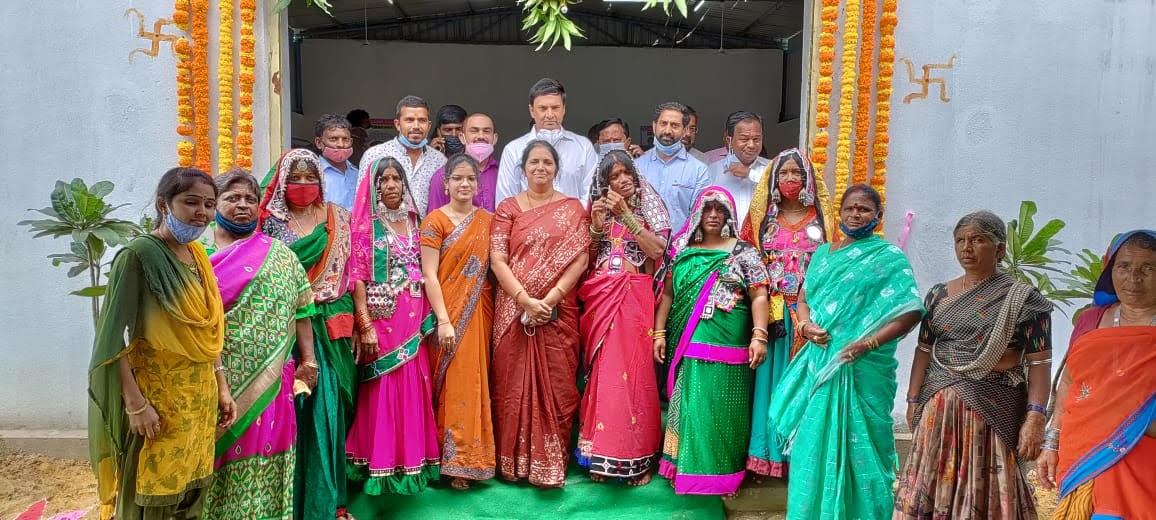
The institute has received ₹1,60,10,115.00 funding from Department of Science and Technology, Government of India for the project titled “Poverty alleviation and upliftment of women through mechanized manufacturing of traditional ornaments and house hold products” in the year 2020. The project was envisioned by Dr. D. Shobha Rani for the empowerment of tribal women living in the vicinity of the institute.
Tribal women (i.e., Lambada women or also called as Banjara's) living in Dundigal thanda I and II are manufacturing their own ethnic dresses, traditional ornaments and household decorative items. Their ethnic dresses are having rich mirror work and traditional ornaments such as plated hair locks, bejewels (tukri), white bangles (bandiya), rings, chains and coins are predominantly manufactured using shells, crude metals and lucky amulets. Decorative household items are manufactured with wood, clay, roots and barks. It is worthful to state that all the above items listed are manufactured by their own hands using their traditional knowledge and skill, which is a time taking process and their work is not getting appreciable revenue. The genre of traditional knowledge and skill owned by every individual woman are to be identified and trained in such a manner that their traditional work is merged with machines to yield a fruitful development in terms of revenue and lifestyle.
The intervention is to mechanize five such traditional methods like bangle making, chain making, coin making, wood carving and embroidery to produce fabricated machinery from the institute to increase productivity to meet the market demand and increase the livelihood of the tribal women and encouraging the migrated workers back to the ethnic business.
| Principal Investigator | Dr. D. Shobha Rani Professor, Department of EEE |
| Co-PI 1 | Mr. S. Srikrishnan Assistant Professor and Head, Department of CE |
| Co-PI 2 | Mr. A. Srikanth Assistant Professor, Department of EEE |
| Co-PI 3 | Mr. B. Vijaykrishna Assistant Professor, Department of ME |
| Co-PI 4 | Ms. Shaik Ruksana Begam Assistant Professor, Department of EEE |
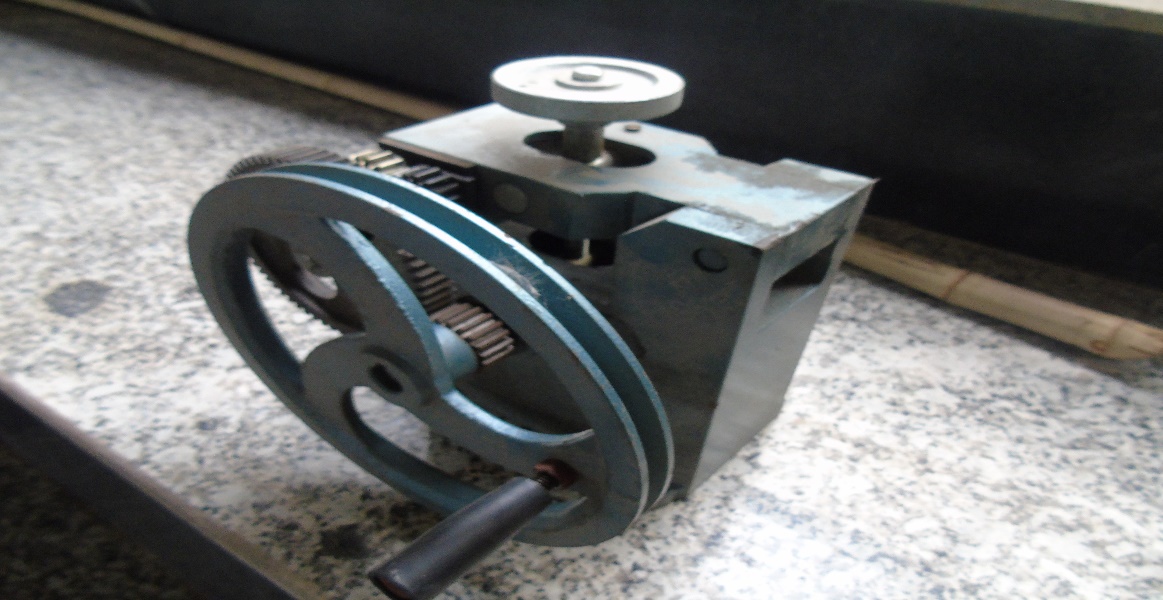 Traditional handmade ivory bangles have been both cultural and art significant based on the design. Plain and carved bangles of various sizes exist but are restricted by the outer diameter of the ivory resources. The traditional process involves the hand drilling and hand carving of said ivory blocks and carving the external surfaces by physical tools. With advice from the DST expert committee and maintaining the handmade quality with geographical indicators, a gear-based machine has been fabricated for making metal and non-metallic bangles by converting continuously fed wires through dies customed designed with lambada designs.
Traditional handmade ivory bangles have been both cultural and art significant based on the design. Plain and carved bangles of various sizes exist but are restricted by the outer diameter of the ivory resources. The traditional process involves the hand drilling and hand carving of said ivory blocks and carving the external surfaces by physical tools. With advice from the DST expert committee and maintaining the handmade quality with geographical indicators, a gear-based machine has been fabricated for making metal and non-metallic bangles by converting continuously fed wires through dies customed designed with lambada designs.
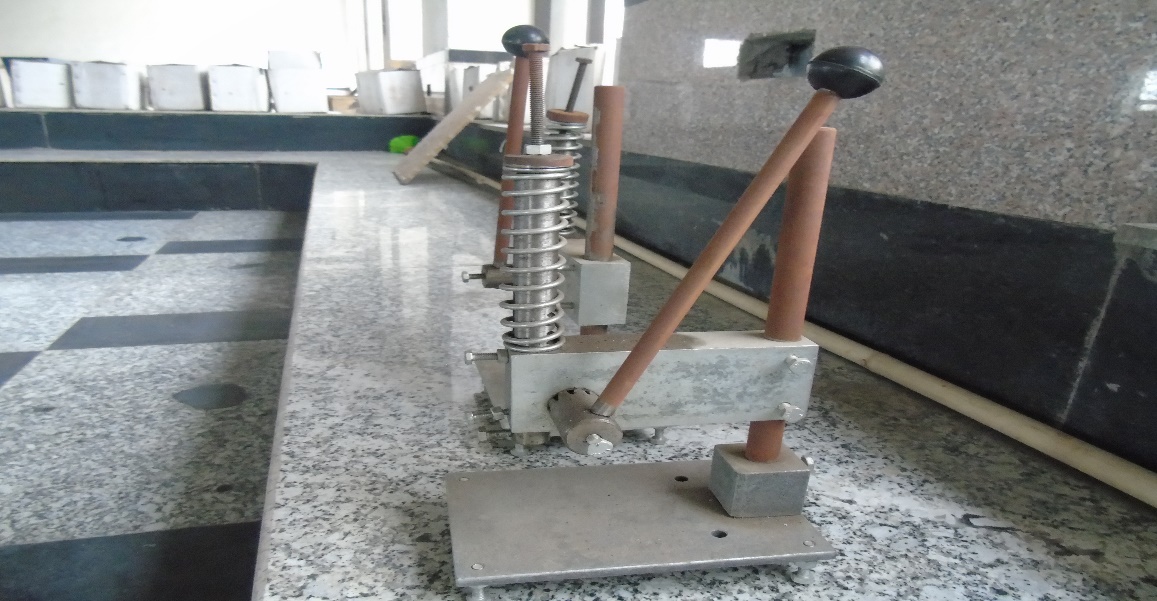 Ethnic jewelry making include currency coins, other metallic coins and amulets of metal. The blank coins are mostly made by mass casting or stamping. Die stamp and spot weld technology can be incorporated into a single machine setup where multiple rings can be welded to the surface of the coins and a variety of design dies can be made use for patterning on the surface of the coins for further processing.
Ethnic jewelry making include currency coins, other metallic coins and amulets of metal. The blank coins are mostly made by mass casting or stamping. Die stamp and spot weld technology can be incorporated into a single machine setup where multiple rings can be welded to the surface of the coins and a variety of design dies can be made use for patterning on the surface of the coins for further processing.
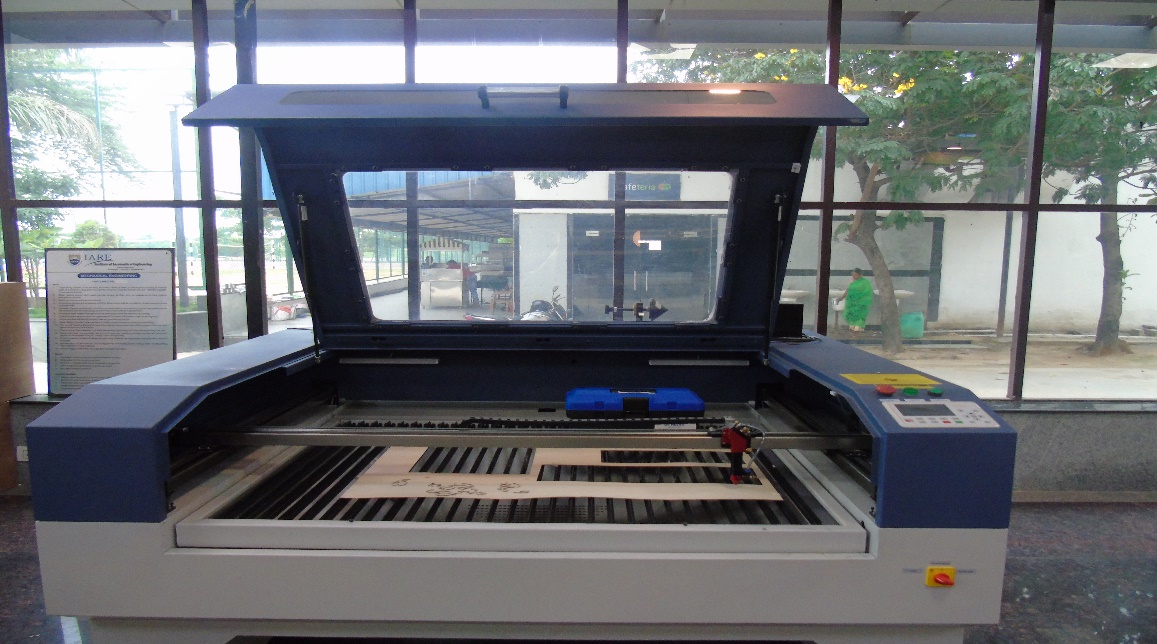 Wood based toys, clay based ceramic earthen tiles and pots, bark and root-based articles have a common ground being that the design made are either carved or ground into the base materials after processing. Handmade tools and handicrafts take a long duration to complete. Mechanized process using laser or carving tools on top of wood or clay using a CNC algorithm may reduce the manhours required to produce the same article and further reduce the cycle time for the product with a versatile surface finish.
Wood based toys, clay based ceramic earthen tiles and pots, bark and root-based articles have a common ground being that the design made are either carved or ground into the base materials after processing. Handmade tools and handicrafts take a long duration to complete. Mechanized process using laser or carving tools on top of wood or clay using a CNC algorithm may reduce the manhours required to produce the same article and further reduce the cycle time for the product with a versatile surface finish.
 Early metal chains are made by chain linking which when done manually is a tedious process involving cutting material to even edged pieces and bending the material to produce various circlet locking patterns. The chain making machine incorporates all the above features into a single machine where a thing strip of metal is fed as the input. The machine then dices even pieces of metal, bends it according to design and creates cross links. The output product is a continuous stream of cross-linked metal chain which can be further used for several design-based jewelry making processes.
Early metal chains are made by chain linking which when done manually is a tedious process involving cutting material to even edged pieces and bending the material to produce various circlet locking patterns. The chain making machine incorporates all the above features into a single machine where a thing strip of metal is fed as the input. The machine then dices even pieces of metal, bends it according to design and creates cross links. The output product is a continuous stream of cross-linked metal chain which can be further used for several design-based jewelry making processes.
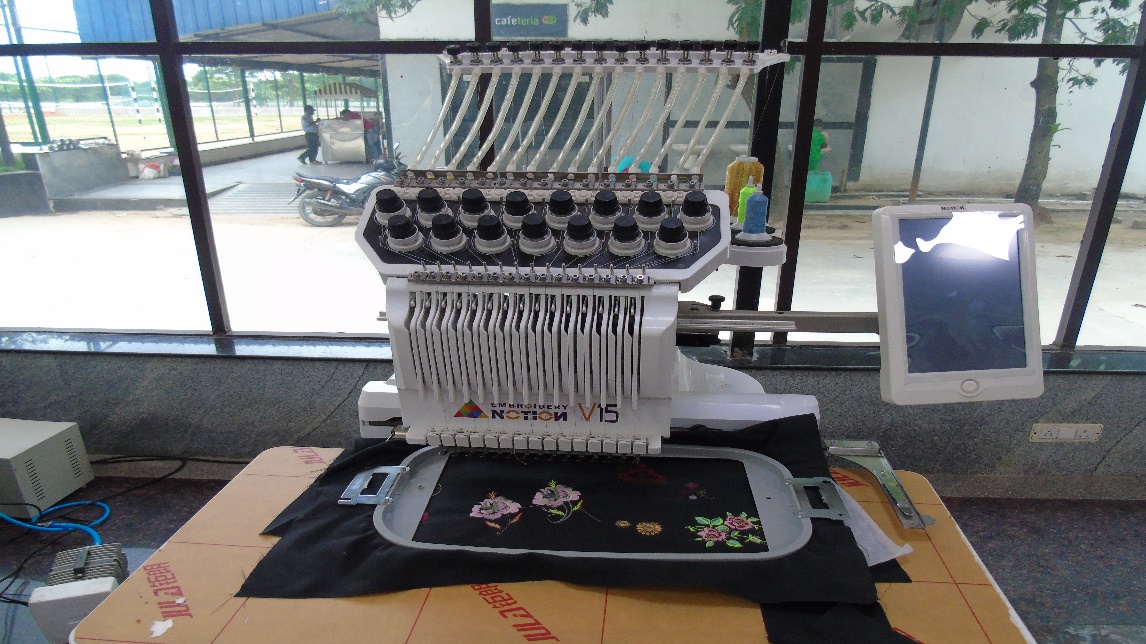 Ethnic art include the handmade embroidered cloths, scarves and carpets which takes a long time to make and have intrinsic patterns signifying the family of cloth workers. Image processing technology and CNC based sewing machine is proposed in this work where a previous design or pattern is captured or fed into the machine through the image reader and based on the design the sewing machine operated by CNC algorithm defines the path of the needles for the effective pattern making. The cycle time of said machines are relatively lower than that of the handmade process and lean time for the material is also reduced making the overall production effective and rapid.
Ethnic art include the handmade embroidered cloths, scarves and carpets which takes a long time to make and have intrinsic patterns signifying the family of cloth workers. Image processing technology and CNC based sewing machine is proposed in this work where a previous design or pattern is captured or fed into the machine through the image reader and based on the design the sewing machine operated by CNC algorithm defines the path of the needles for the effective pattern making. The cycle time of said machines are relatively lower than that of the handmade process and lean time for the material is also reduced making the overall production effective and rapid.
State officials having perused the project, its validity, requirement and cause have pledged support. As a conforming gesture, a place of land near the thanda has been provided in a long-term lease agreement for the construction of common facility center by the collaborative effort of Telangana state government, District collectorate, Lambada counsellor and Institute management. After completion of project, it will serve as a congregation building for Lambada women to showcase their work and market their products.
State officials visits the site regularly for checking the progress of work. Labor shortage due to pandemic situation has been explained and the officials have extended their whole support to see the works completes in function at the earliest possible convenience.
Further to the project awareness program conducted in the thanda, the management had invited the people from target beneficiaries to visit the institute to peruse the machinery procured and voice their opinion on the usefulness including any minor modifications and residual engineering. The program was further covered in news dailies of the state and telecasted in local television channels.
Beneficiaries met with the project coordinator to discuss about the effects of implementation of project in the community, growth opportunities and livelihood improvements in socio economic structure.